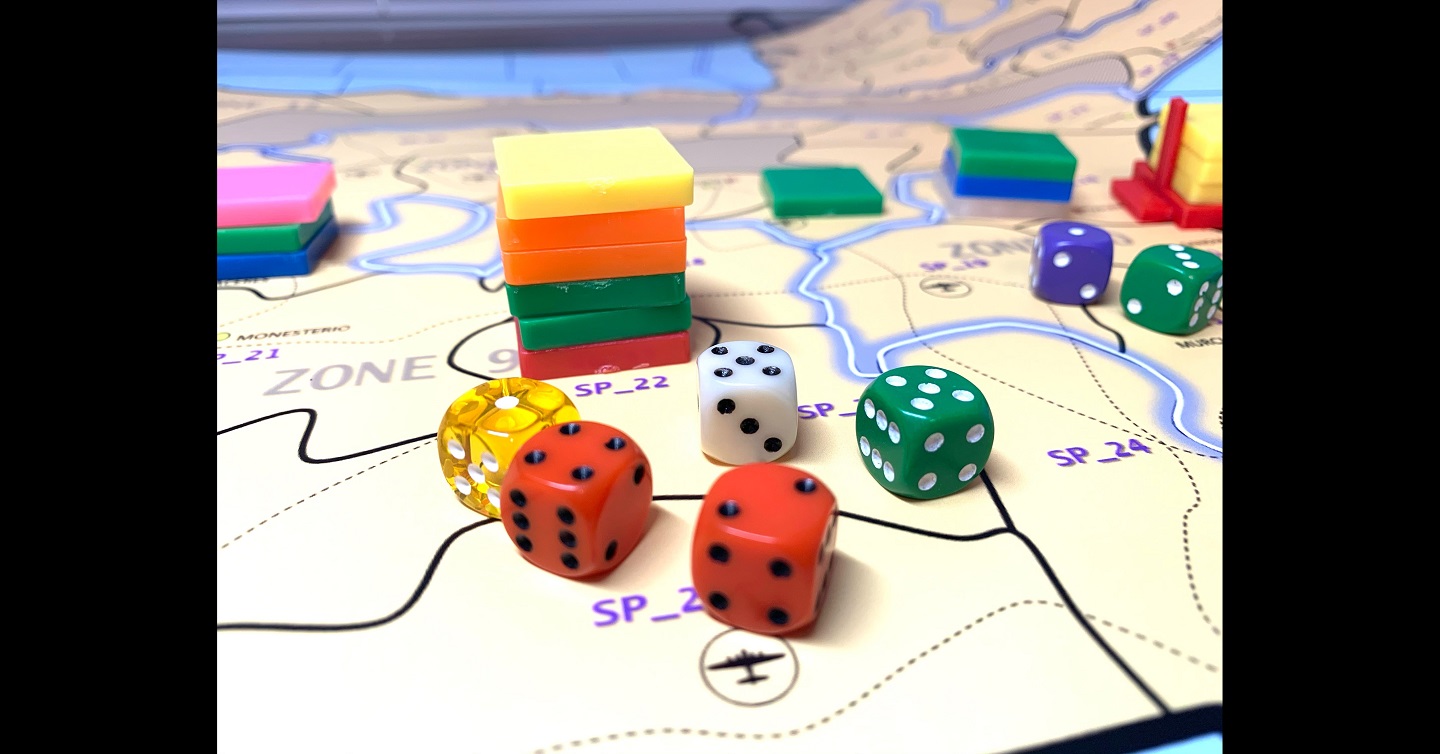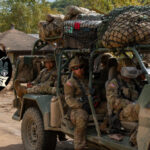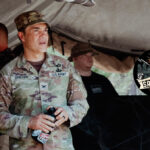
A BETTER PEACE welcomes back Ken Gilliam for another installment of the WARGAMING ROOM. In this episode Ken sits down with Doug Winton, the chair of the Department of Military Strategy, Planning and Operations (DMSPO) at the U.S. Army War College. Ken and Doug discuss War College games like JOINT OVERMATCH and MDO 1943. They examine the history of the games and their incorporation into the DMSPO curriculum to include the benefits as well as the limitations based on the time constraints and faculty experience of the resident program.
We’re different than biologists or chemists or physicists because we don’t have a laboratory where we can learn and develop new knowledge.
Podcast: Download
Subscribe: Apple Podcasts | Spotify | Amazon Music | Android | Pandora | iHeartRadio | Blubrry | Podchaser | Podcast Index | TuneIn | Deezer | Youtube Music | RSS | Subscribe to A Better Peace: The War Room Podcast
Doug Winton is a colonel in the U.S. Army and the Chair of the Department of Military Strategy, Planning and Operations (DMSPO) and the Henry L. Stimson Chair of Military Studies at the U.S. Army War College. He holds a Doctor of Philosophy degree in International Relations from Johns Hopkins University. Ken Gilliam is a colonel in the U.S. Army and Director of Strategic Wargaming at the Center for Strategic Leadership, U.S. Army War College. The views expressed in this presentation are those of the speakers and do not necessarily reflect those of the U.S. Army War College, U.S. Army, or Department of Defense.
Photo Description: MDO 1943 gameboard
Photo Credit: COL Ken Gilliam





Great discussion of the blending of academic needs (faculty expertise, student objectives). “New knowledge about the future…” very well said. I work in the Cybersecurity Agency of DHS and believe that hypergame theory (competitive ecosystems) really allows the creative tradeoffs that would show player brilliance and innovation.
We are so fortunate to be such a great military – but now we need to be great strategists.
Doug, great discussion about the value and utility of wargames. Perhaps the best description I have heard that did not come from a “wargamer.” I can only hope that faculty from other military institutions listen to you remarks.
A “laboratory for military professionals”/a “wargaming room” for strategists, might I suggest, must today be designed to deal with, generally, classic “human terrain” problems and, specifically, with the classic “human terrain” problem that I describe below:
Classic Human Terrain Problem:
If we were to acknowledge that, in general, the goal of U.S./Western involvement in less-modern countries, this is to (a) help these countries “develop” (i.e., help them “modernize”) more along modern western political, economic, social and value lines and to (b) help bring these states and societies more into the U.S./the West’s sphere of power, influence and control,
And, if we were to acknowledge that, accordingly, the goal of our opponents (both great nation and small opponents, and both state and non-state actor opponents) is to prevent the U.S. from achieving one — or both — of its such objectives,
Then, within this exact context/within this exact “conflict environment,” how might our military professionals, our wargaming room strategic specialists, suggest that we deal with the classic “human terrain” problem described by Robert Gilpin — in his 2000 “The Challenge of Global Capitalism: The World Economy in the 21st Century” (see Page 3 of the “Introduction” chapter therein) — here:
“Capitalism is the most successful wealth-creating economic system the world has every known: no other system, as the distinguished economist Joseph Schumpeter pointed out, has benefited ‘the common people’ as much. … (However) Technological progress, the ultimate driving force of capitalism, requires the continuous discarding of obsolete factories, economic sectors, and even human skills. The system rewards the adaptable and the efficient; it punishes the redundant and the less productive.
This ‘process of creative destruction,’ to use Schumpeter’s term, produces many winners but also many losers, at least in the short term, and poses a serious threat to traditional social values, beliefs, and institutions. …. (Accordingly) Threatened individuals, groups, or nations (also) constitute an ever-present force that could overthrow or at least significantly disrupt the capitalist system.”
(Items in parenthesis above are mine.)
By reviewing the information that I have provided above, one can easily see how, in order for our opponents to easily pursue (and easily achieve?) their objective — of preventing the U.S./the West from transforming and incorporating less-modern states and societies — these opponents may only need to:
a. Successfully exploit the threat — to traditional social values, beliefs, and institutions (not only in these less-modern countries, but also those within the U.S./the West itself) — posed by our capitalist system. And/or to,
b. Successfully exploit the threat — to the capitalist system itself — posed by this such systems’ common “threatened”/”loser” groups (even those within the U.S./the West).
Note here that our opponents do not need any aircraft carriers, cruise missiles, nuclear missiles, tanks, large military formations, large bases of operation, etc. — either at home or abroad — to pursue and achieve their objectives.
Accordingly, NOW tell me what strategy/strategies you propose — to deal with the classic “human terrain” problem that I have presented to you above.